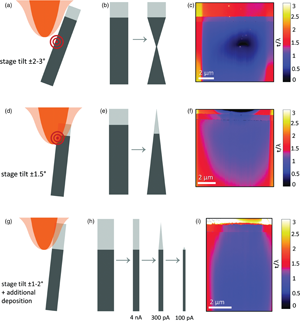Crossref Citations
This article has been cited by the following publications. This list is generated based on data provided by
Crossref.
Singh, Kritika
Rout, Surya Snata
Krywka, Christina
and
Davydok, Anton
2023.
Local Structural Modifications in Metallic Micropillars Induced by Plasma Focused Ion Beam Processing.
Materials,
Vol. 16,
Issue. 22,
p.
7220.
Höflich, Katja
Hobler, Gerhard
Allen, Frances I.
Wirtz, Tom
Rius, Gemma
McElwee-White, Lisa
Krasheninnikov, Arkady V.
Schmidt, Matthias
Utke, Ivo
Klingner, Nico
Osenberg, Markus
Córdoba, Rosa
Djurabekova, Flyura
Manke, Ingo
Moll, Philip
Manoccio, Mariachiara
De Teresa, José María
Bischoff, Lothar
Michler, Johann
De Castro, Olivier
Delobbe, Anne
Dunne, Peter
Dobrovolskiy, Oleksandr V.
Frese, Natalie
Gölzhäuser, Armin
Mazarov, Paul
Koelle, Dieter
Möller, Wolfhard
Pérez-Murano, Francesc
Philipp, Patrick
Vollnhals, Florian
and
Hlawacek, Gregor
2023.
Roadmap for focused ion beam technologies.
Applied Physics Reviews,
Vol. 10,
Issue. 4,
Dumoux, Maud
Glen, Thomas
Smith, Jake LR
Ho, Elaine ML
Perdigão, Luis MA
Pennington, Avery
Klumpe, Sven
Yee, Neville BY
Farmer, David Andrew
Lai, Pui YA
Bowles, William
Kelley, Ron
Plitzko, Jürgen M
Wu, Liang
Basham, Mark
Clare, Daniel K
Siebert, C Alistair
Darrow, Michele C
Naismith, James H
and
Grange, Michael
2023.
Cryo-plasma FIB/SEM volume imaging of biological specimens.
eLife,
Vol. 12,
Issue. ,
Islam, Md Tariqul
Weinberger, Christopher R.
and
Thompson, Gregory B.
2024.
Rapid microcantilever preparation for conditional fracture toughness evaluation.
Journal of Materials Research and Technology,
Vol. 30,
Issue. ,
p.
5444.
Bonifacio, C S
Yu, Y
Ray, M L
Skowronski, M
and
Fischione, P
2024.
TEM Preparation and Characterization of a GeTe-based Phase Change Memory Device at Partial SET Mode.
Microscopy and Microanalysis,
Vol. 30,
Issue. Supplement_1,
Fellah, Clémentine
and
Lesaint, Bérangère
2024.
Comparative study of ion milling techniques for the preparation of ceramic fibers in transmission electron microscopy.
Micron,
Vol. 180,
Issue. ,
p.
103612.
Wacker, Irene
Curticean, Ronald
Ryklin, Daniel
Weidinger, Britta
Mayer, Frederik
Huang, Li‐Yu
Hoffmann, Julian
Islam, Monsur
von Coelln, Nadine
Schmitt, Tanja
Huck, Christian
Tegeder, Petra
Feist, Florian
Kammerer, Jochen A.
Barner‐Kowollik, Christopher
Wegener, Martin
Blasco, Eva
Gengenbach, Ulrich
and
Schröder, Rasmus R.
2024.
Deconstructing 3D Structured Materials by Modern Ultramicrotomy for Multimodal Imaging and Volume Analysis across Length Scales.
Advanced Functional Materials,
Vol. 34,
Issue. 20,
